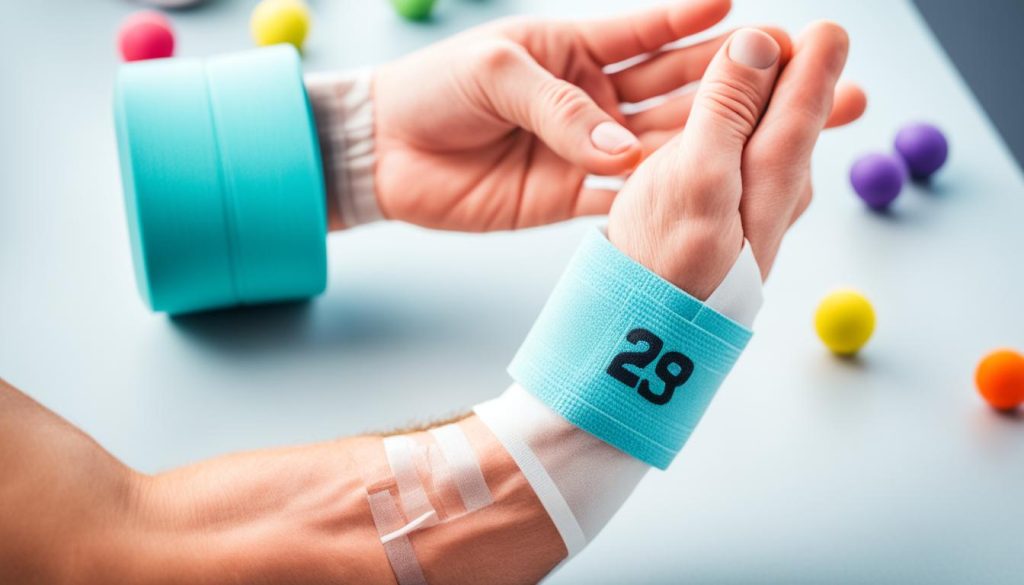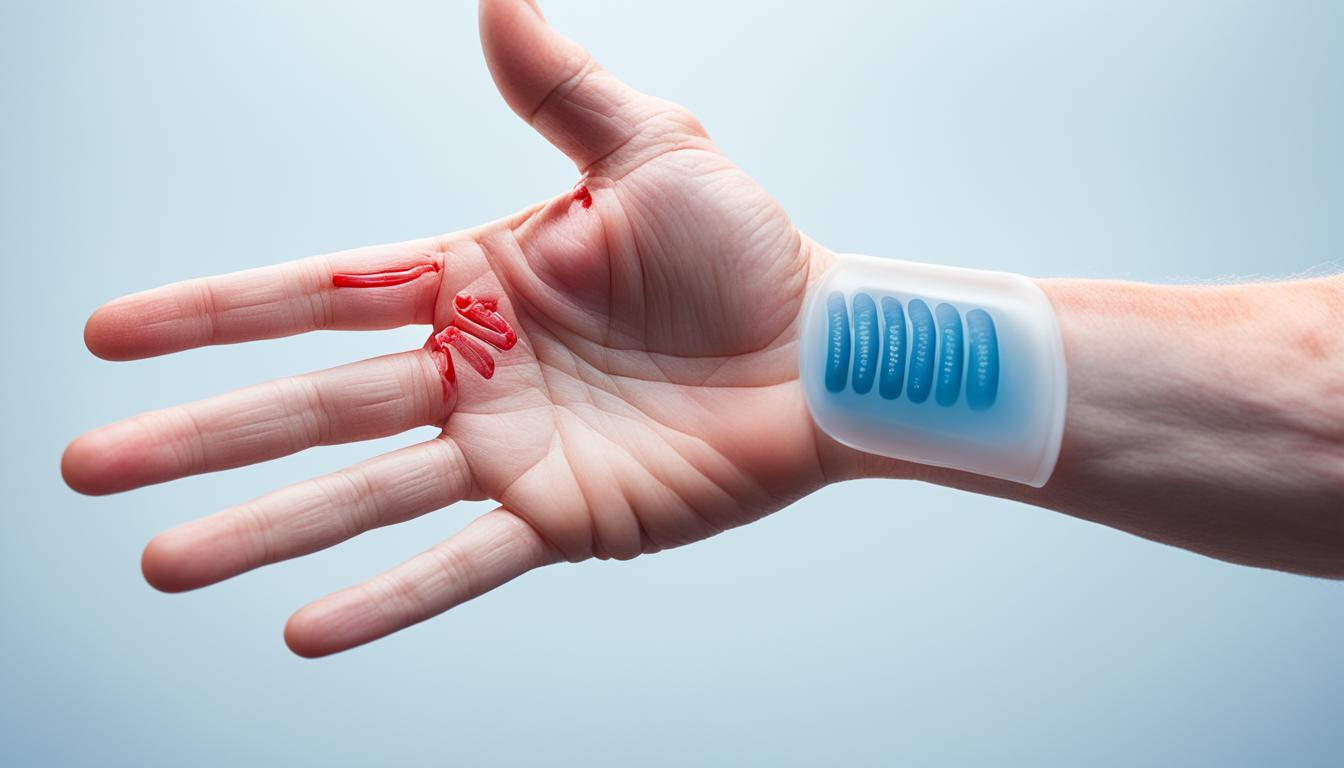Trigger finger or stenosing tenosynovitis is a condition that affects the fingers, causing them to become locked in a bent position and then suddenly snaps back. If left untreated, trigger finger can have serious consequences and complications. The risks of neglecting trigger finger treatment can lead to permanent finger deformities and limitations in hand functionality.
When trigger finger is left untreated, the affected finger may remain locked in a bent position or become stuck in a straightened position. This can result in difficulty using the affected hand, making everyday tasks challenging. However, it’s important to note that not all trigger fingers require treatment, as some cases can resolve spontaneously without intervention.
Ignoring trigger finger can have a significant impact on one’s quality of life. The untreated trigger finger risks include worsening symptoms, severe swelling, and the potential for other fingers to become affected. This can greatly limit functionality and make it challenging to perform simple tasks.
To prevent these complications, it is crucial to seek treatment from a specialist as soon as symptoms of trigger finger first appear. Non-surgical treatment options, such as splinting and corticosteroid injections, are effective in relieving symptoms for many patients. These non-invasive methods can avoid the need for trigger finger release surgery. However, if non-surgical treatments fail to provide relief, surgery may be recommended.
Trigger finger release surgery is a highly effective surgical treatment for trigger finger. The procedure involves widening the tendon sheath to allow the tendon to move freely. This can be done through open release surgery or percutaneous release surgery, depending on the severity of the condition. Trigger finger surgery helps prevent recurrence and allows patients to regain normal finger movement shortly after the procedure.
In conclusion, leaving trigger finger untreated can result in serious consequences and complications. It is essential to seek medical attention and consult with a specialist if you experience symptoms of trigger finger. Prompt treatment can prevent further complications and ensure the best outcomes for patients.
What Will Happens if a Trigger Finger is Not Treated?
If trigger finger is left untreated, the consequences can be significant and impact your daily life. Here are some of the risks and consequences of neglecting trigger finger treatment:
1. Progression and Worsening of the Condition
Without proper treatment, trigger finger can worsen over time. The affected finger may remain locked in a bent position, making it difficult to straighten. Conversely, it may become stuck in a straightened position, causing limitations in finger movement. In some cases, other fingers that were initially unaffected may also develop trigger finger symptoms, leading to further difficulties.
2. Severe Swelling and Discomfort
Leaving trigger finger untreated can result in severe swelling and discomfort. The affected finger may become swollen, making it painful to perform daily activities. Swelling can also lead to stiffness, reducing mobility and functionality in the hand. Everyday tasks such as gripping objects or typing can become challenging and cause significant discomfort.
3. Limitations in Hand Functionality
As the trigger finger progresses, it can severely limit hand functionality. The inability to fully bend or straighten the finger can make it difficult to grasp objects, handle tools, or perform delicate tasks. This can impact your ability to work, engage in hobbies, and carry out simple tasks in your daily life.
To visually understand the risks and consequences of untreated trigger finger, refer to the following table:
| Consequences of Neglecting Trigger Finger Treatment | Risks of Leaving Trigger Finger Untreated | Untreated Trigger Finger Consequences |
|---|---|---|
| Progression and worsening of the condition | Development of permanent finger deformities | Limitations in hand functionality |
| Severe swelling and discomfort | Inability to perform everyday tasks | Persistent pain and stiffness |
| Impaired grip strength | Loss of fine motor skills | Difficulty in performing work-related tasks |
It is important to seek prompt medical attention and consult with a healthcare professional if you suspect that you may have trigger finger. Early treatment can help prevent the progression of the condition and mitigate the associated risks.

In the next section, we will explore the non-surgical treatment options available for trigger finger and their effectiveness.
Non-Surgical Treatment for Trigger Finger
In most cases, trigger finger can be effectively treated using non-surgical methods. These non-invasive options provide viable alternatives to surgery and can help alleviate pain and restore normal hand functionality.
1. Splinting
One non-surgical treatment option for trigger finger is splinting. A splint is a supportive device that immobilizes the affected finger and prevents it from bending. By keeping the finger still and stationary, splinting helps reduce inflammation and allows the tendon sheath to heal properly. It promotes finger mobility while preventing stiffness, allowing patients to perform everyday tasks with ease.
2. Corticosteroid Injections
Corticosteroid injections are another effective non-surgical treatment for trigger finger. During this procedure, a corticosteroid medication is injected directly into the tendon sheath, targeting the inflamed area. The corticosteroids work by reducing inflammation and alleviating pain, providing long-lasting relief from trigger finger symptoms. This treatment option is particularly beneficial for patients who experience severe pain and swelling.
3. Physical Therapy
Physical therapy plays a crucial role in the non-surgical treatment of trigger finger. Under the guidance of a qualified therapist, patients perform specific hand exercises and stretching techniques to improve finger mobility and strengthen the affected tendons. Physical therapy can help restore full range of motion, reduce pain, and enhance overall hand functionality.

Benefits of Non-Surgical Treatment
The primary advantage of non-surgical treatment options for trigger finger is their ability to provide effective symptom relief without the need for invasive surgery. These methods can significantly reduce pain, inflammation, and stiffness, allowing patients to resume their daily activities with minimal disruption.
Moreover, non-surgical treatments are often the first-line approach recommended by healthcare professionals. They are safe, convenient, and generally well-tolerated, making them suitable for a wide range of patients.
When Non-Surgical Methods Fail
Although non-surgical treatments are usually successful in managing trigger finger, there are instances where they may not provide sufficient relief. If symptoms persist or worsen despite conservative treatment, trigger finger release surgery may be considered as the next course of action.
| Treatment Option | Advantages | Disadvantages |
|---|---|---|
| Splinting | Non-invasive, promotes finger mobility | Restricts finger movement, may cause discomfort |
| Corticosteroid Injections | Effective pain relief, reduces inflammation | Potential side effects, temporary relief |
| Physical Therapy | Improves finger mobility, strengthens tendons | Requires time commitment, gradual recovery |
It is important to consult with a healthcare professional to determine the most suitable treatment approach for your specific case of trigger finger. They will carefully evaluate your symptoms and medical history to ensure the best course of action is taken to restore finger function and alleviate discomfort.
Trigger Finger Release Surgery
Trigger finger release surgery is a highly effective surgical treatment for trigger finger, recommended when non-surgical methods have failed to provide relief. There are two main techniques used in trigger finger release surgery: open release and percutaneous release.
In open release surgery, the surgeon makes a small incision in the affected finger’s palm, allowing them to cut the constricted tendon sheath. By widening the sheath, the tendon can move more freely, alleviating the locking and snapping sensation characteristic of trigger finger. This technique has been widely used for many years and has proven to be successful in providing lasting relief for patients.
Percutaneous release surgery is a less invasive alternative to open release surgery. In this procedure, the surgeon inserts a small needle through the skin to access the tendon sheath. They then use the needle to slice through the constricted ligament, effectively releasing the tension and allowing for improved finger movement. Percutaneous release surgery offers the advantage of reduced scarring and a shorter recovery period.
Regardless of the technique used, trigger finger release surgery aims to prevent the recurrence of the problem in the same finger. It is a safe and reliable solution for patients who have exhausted non-surgical treatment options and wish to regain full hand functionality.
As with any surgical procedure, trigger finger release surgery carries some risks. These can include infection, bleeding, nerve damage, or stiffness in the finger. However, serious complications are rare, and the benefits of the surgery often outweigh the potential risks. Your surgeon will discuss these risks with you beforehand and take measures to minimize them during the procedure.
Patients who undergo trigger finger release surgery can usually resume normal finger movement immediately after the procedure. The recovery period is generally short, and most individuals experience significant improvement in their symptoms within a few weeks.
Comparison of Trigger Finger Release Surgery Techniques
| Technique | Procedure | Advantages |
|---|---|---|
| Open Release | Incision in the palm to cut the tendon sheath | Proven effectiveness, lasting relief |
| Percutaneous Release | Needle insertion to slice through the ligament | Less invasive, reduced scarring |
Trigger finger release surgery is a safe and reliable option for patients who have not found relief from non-surgical treatments. By choosing the appropriate technique, surgeons can effectively alleviate symptoms, restore finger mobility, and improve overall hand functionality. If you are considering trigger finger surgery, consult with a specialist to discuss the most suitable treatment approach for your condition.

Conclusion
Untreated trigger finger can have severe consequences and risk permanent damage to the finger. Ignoring treatment can lead to permanent finger deformities and limitations in hand functionality. It is crucial to address trigger finger symptoms promptly to prevent further complications.
While some trigger fingers may resolve on their own, seeking medical attention and exploring non-surgical treatment options is essential. Non-surgical methods, such as splinting and corticosteroid injections, can effectively alleviate symptoms for many patients.
However, if non-surgical treatments fail to provide relief, trigger finger release surgery may be necessary. This surgical procedure can restore finger mobility and prevent the recurrence of trigger finger. The recovery period for trigger finger surgery is typically short, allowing patients to resume normal finger movement soon after the procedure.
To ensure the best outcomes and minimize risks, it is advisable to consult with a specialist and follow their guidance when experiencing trigger finger symptoms. Early intervention and appropriate treatment can help prevent complications and maintain hand functionality.




